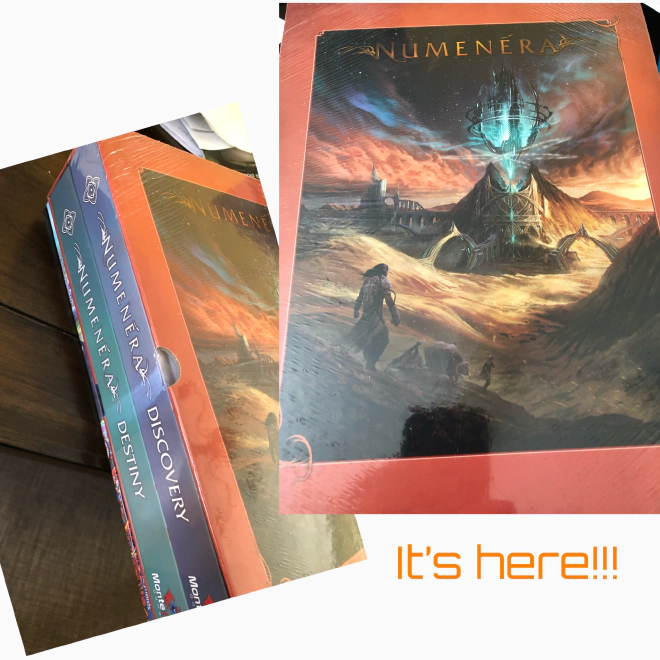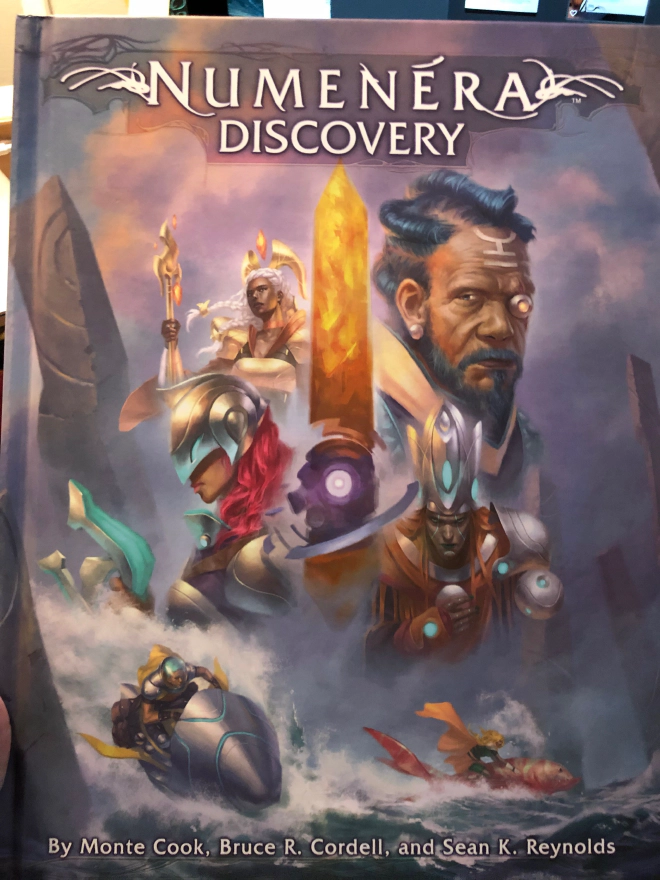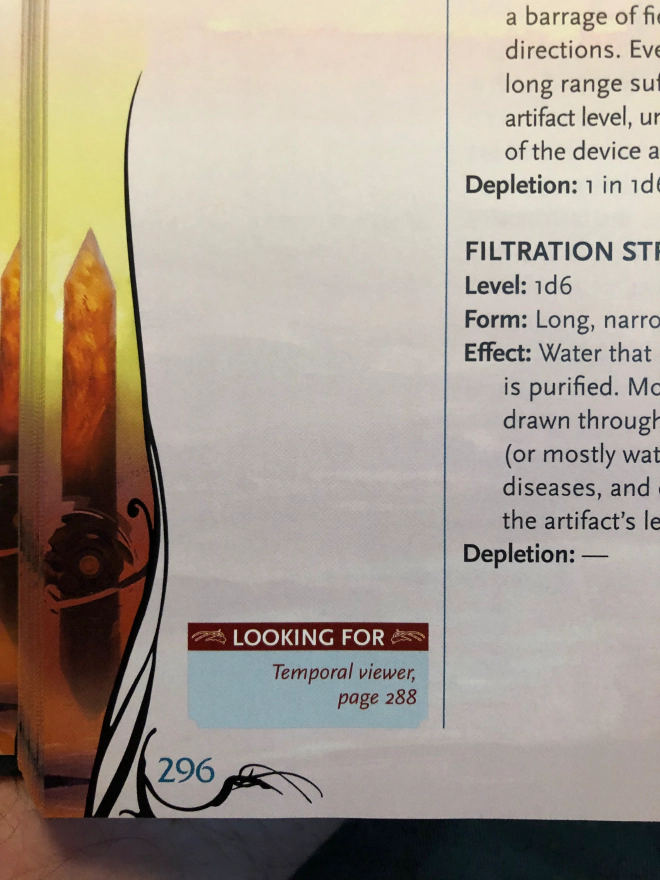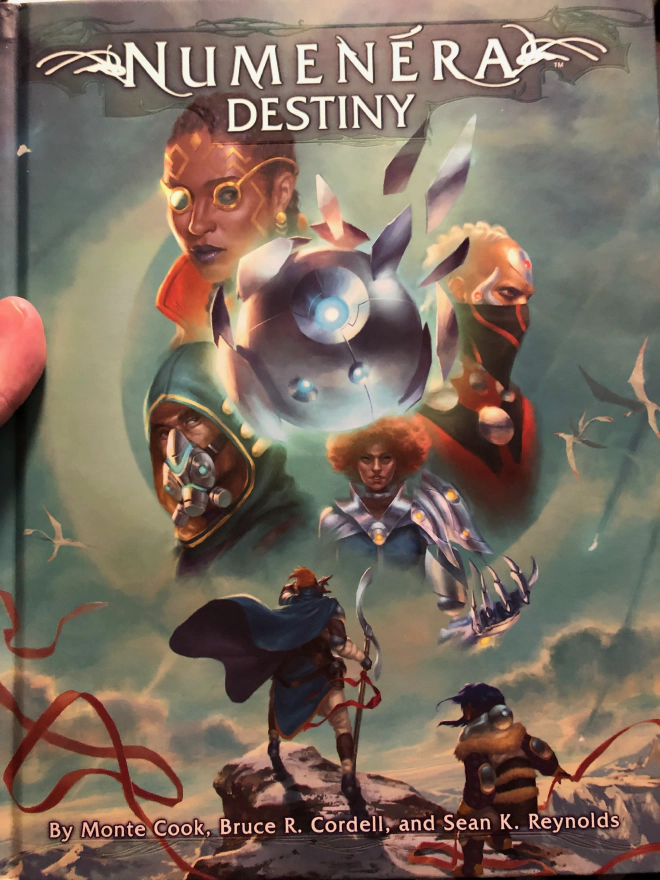
Numenera Discovery and Destiny are here, and they do not disappoint. As always, Monte Cook Games nails the production quality, with some beautiful volumes filled with incredible art. I wish I had time to do the detailed review that these new books deserve, but I don’t, so instead I’ll hit the highlights.
Discovery #

This book contains the revised rules from the original corebook. If you’ve read the original Numenera rules before, much will be familiar here for you. However, there are some notable differences.
- Player Intrusions are a thing! Now players have the ability to spend 1 XP to trigger a player intrusion on the game, similar to a GM intrusion, but to the party’s benefit. Naturally, the GM still has final say on whether the intrusion occurs, but each character type comes with suggested intrusions which seem reasonable to me.
- Glaives get some nice new abilities that help open up their gameplay from pure “I hit it real hard”, including some social and strategic moves.
- Jacks get some serious love here, transforming them from a simple hybrid type to one with a wide array of unique capabilities. This is going to be be very welcome to players, where having a speciality or unique place in the group is key to enjoyment.
- New sample adventures and art!
In addition, MCG also makes good on a promise to their fanbase, ensuring that all the previously published supplements remain compatible with the new rules. When a supplement directs you to a page in the corebook, checking that page in Discovery will find you a margin entry like the one below.

This is an incredibly thoughtful feature, that was also likely a true pain to get right.
Destiny #

This is the new stuff! Destiny consists of not only three new character types, new descriptors, new foci, and setting material, but also whole expanded ruleset including mechanics for building communities as well as salvaging and crafting Numenera.
The new character types are well done, and include new mechanics for acquiring followers, and affecting the status and capability of the communities to which they belong.
- Arkus: a persuader, the face, leader, etc. A reimagining and enhanced version of the Glint from the old character options books.
- Delve: a salvager and survivor designed for digging deep into the ruins and returning with valuable material above and beyond the typical cypher.
- Wright: A crafter par excellence, who can actually create cyphers and artifacts from the raw material that Delves recover from ruins of the previous worlds.
I’ve had the opportunity to run several games using these new types, and they differentiate themselves well and introduce fun new dynamics with their unique abilities.
Other highlights from Destiny:
- The community rules are easy to understand and designed to allow their use without imposing undue burden on the GM. Each community has a rank, which represents its overall health and ability to interact with other communities. It’s not exactly the same as “each creature is just a level”, but similar enough to make it easy to track.
- Crafting Numenera. This is an area where I had a lot of concerns. Any time you introduce crafting mechanics, it runs the risk of overwhelming the game with bookkeeping. The rules here do their best to minimize this, and are relatively streamlined, but the jury is still out for me on these. The in-game economics don’t feel entirely clear to me, and I worry that in some ways it diminishes the mystery behind much of the numenera, but I’m going to reserve judgment until I’ve run more than a handful of games with the crafting component. 1
- Lots of additional descriptors and foci!
Ultimately, Destiny adds a whole new layer to the game for players that want to participate in the Ninth World beyond pure exploration, which is very cool. It’s also designed in such a way that if your group isn’t interested in the community elements, they can happily ignore them.
The Ninth World Awaits #
On the whole, I’m very pleased with the new rules, and they’ve inspired me to prepare a new campaign, which I’m looking forward to starting in the next month or so. Numenera is without a doubt my favorite system/setting to run games in, and I’m pumped to get going.
If you’ve picked up the books and have thoughts about them, I’d love to hear about it. Drop me a line and let me know!
Worth noting, I’ve seen a number of home-brew versions attempting to simplify the crafting timetables and mechanics, which suggests to me that it may still be too complicated for many groups. ↩︎
